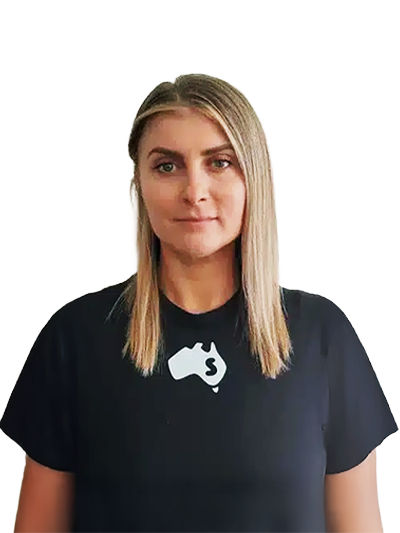We share practical tips to help businesses in Australia make the most of HubSpot.
- HubSpot solutions from $129/hour + GST.
Book a video call with our specialists.
Get a detailed, personalised setup and optimisation plan.
Let Smartmates transform your data into actionable insights.
Minimum project size 10 consulting hours. First Top-Up Special capped at 50 consulting hours.
How to Set Up Custom Dashboards in HubSpot for Real-Time Insights
Learn how to set up custom dashboards in HubSpot to track real-time insights. Get step-by-step guidance on identifying KPIs, customising reports, and optimising your dashboard layout.

Custom dashboards in HubSpot are essential for tracking key metrics and gaining actionable insights in real time. They help teams monitor performance across sales, marketing, and customer service, ensuring decisions are based on accurate, up-to-date data. Here’s a step-by-step guide on setting up custom dashboards in HubSpot CRM to enhance your data visibility and make smarter business decisions.
Step 1: Identify Key Metrics and Goals
Before creating your dashboard, it’s crucial to determine which metrics align with your team’s goals. Ask yourself:
- Sales Goals: Are you tracking deal stages, win rates, or pipeline performance?
- Marketing Objectives: Do you need to monitor website traffic, lead sources, or campaign engagement?
- Customer Service Metrics: Are ticket resolution times, NPS scores, or feedback trends relevant?
Identifying key performance indicators (KPIs) ensures that your HubSpot dashboard is focused and relevant. For support in defining KPIs, working with a HubSpot consultant or HubSpot solutions partner can provide expert guidance tailored to your business needs.
Step 2: Create a New Dashboard in HubSpot
Once your goals are clear, navigate to your HubSpot account and go to the Reports section. Click Create Dashboard and select a template that aligns with your needs, such as sales, marketing, or customer service. If you prefer a fully customised approach, start with a blank template.
A HubSpot CRM partner or HubSpot setup specialist can assist you in selecting and customising templates, especially if you’re new to HubSpot’s reporting tools. Their expertise can save you time and ensure your dashboard meets your requirements.
Step 3: Add Reports to Your Dashboard
With your dashboard in place, it’s time to add specific reports. HubSpot provides a variety of report options, including:
- Sales Performance: Track sales goals, deal forecasts, and revenue targets.
- Marketing Analytics: Monitor website traffic, email performance, and conversion rates.
- Customer Service: Keep tabs on ticket resolution times, customer satisfaction, and response times.
To add a report, click Add Report, browse through the available options, and customise as needed. You can also create custom reports from scratch, selecting specific data points and visual formats that best represent your KPIs. If needed, a HubSpot expert or HubSpot agency partner can help create detailed, meaningful reports that align with your goals.
Step 4: Customise Report Layout and Display
Once you’ve added all relevant reports, arrange them on the dashboard for easy viewing. HubSpot allows you to drag and resize reports to prioritise the most important data at a glance. Make sure high-priority metrics are placed prominently, with supporting data in a logical flow.
Customising the layout ensures that your team can quickly access the information they need. For advanced layout customisation, a HubSpot CRM agency or HubSpot consultancy can offer insights into optimising your display for usability.
Step 5: Set Dashboard Permissions and Sharing
HubSpot allows you to control who can view, edit, or manage each dashboard. Set permissions based on team roles to ensure the right people have access to relevant data. You can also share dashboards directly with team members or departments via email, or export data for presentations and reporting.
If you’re managing a large team, consider consulting with a HubSpot implementation partner to set up permissions that ensure data security and efficient access. A HubSpot specialist can provide guidance on structuring permissions that match your organisation’s hierarchy and data privacy policies.
Step 6: Monitor and Adjust Your Dashboard Regularly
A dashboard is only valuable if it stays relevant. Schedule regular reviews of your dashboard to ensure it reflects current goals and metrics. As your business evolves, you may need to adjust reports or add new metrics to capture emerging trends.
Partnering with a HubSpot solutions partner or HubSpot professional can be beneficial for ongoing dashboard optimisation. Regular assessments keep your data insights aligned with your evolving business objectives, ensuring that your HubSpot dashboards continue to deliver value over time.
Partner with a HubSpot Expert for Customised Dashboard Solutions
Creating effective custom dashboards in HubSpot requires an understanding of your team’s needs, along with HubSpot’s reporting capabilities. By working with a HubSpot agency Australia or HubSpot CRM partner, you can receive expert advice on building, customising, and maintaining dashboards that support your strategic goals.
With assistance from a HubSpot consultant, your business can unlock the full potential of HubSpot’s reporting tools, allowing you to make data-driven decisions and gain real-time insights into your operations.
Final Thoughts
Setting up custom dashboards in HubSpot is an invaluable way to stay on top of key metrics and make informed decisions. By identifying your goals, customising reports, and partnering with HubSpot experts for support, you can build a dashboard that provides your team with actionable insights.
Connect with a HubSpot solutions partner today to start building powerful dashboards that transform raw data into meaningful insights and drive your business forward.
Request a Callback from Smartmates

Sarah
I’ll listen to your HubSpot needs to understand your business challenges and goals, ensuring a tailored approach.
I’ll bring our engineer onto our first consultation to explore solutions and clarify your requirements.
We’ll deliver your free project plan quotation, detailing the steps, timeline, and costs—up to this point, it’s completely free!
“My mission is to solve your key problems, build your trust in our capabilities and deliver exceptional value for money.”